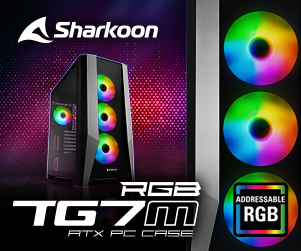Power consumption and temperatures
I have already mentioned that the SSDs can be used almost uncooled. In idle mode, I can measure around 800 mW on the adapter. In normal mode (workstation workloads, gaming), the entire SSD consumes a good 2.8 watts, which is an absolute peak value for a 2 TB PCIe 4 SSD. The maximum of 4 watts at peak (typically 3.5 to 3.8 watts) during continuous copying is also nothing to be afraid of. Thermal throttling is supposed to start at around 90 °C, but I couldn’t even get close to that without a cooler. Further heating stopped at around 66 °C in the stress test and it’s not normally 43 °C when gaming. Without a cooler, mind you. The temperature drops by up to 10 degrees in the stress test with simple rear cooling alone.
Controller and NAND memory
BIWIN uses a MAP1602A from Maxio as its controller (see also reference board). This is a spin-off from JMicron, which also produced various SSD controllers in the past. This highly interesting controller is already based on the 12 nm node from TSMC and an ARM Cortex-R5 core including co-processors. It has four channels and is completely DRAM-free, which ultimately also contributes to increased efficiency. In contrast to other DRAM-less PCIe 4.0 controllers, such as the Corsair MP600 GS I tested recently, this one has a 2400 MT/s bus, which should also improve efficiency and may well annoy Phison. BIWIN has provided the controller with a partial underfill at the corners, which increases the stability of the soldered connections.
Not much is known about the controller, but it supports both Trim and S.M.A.R.T.. Like other controllers, it also uses Active State Power Management (ASPM), Autonomous Power State Transition (APST) and the L1.2 ultra-low power state. Thermal throttling is implemented, but is of little importance as the controller does not get too hot in most applications. This can also be seen from the fact that, unlike many other models, there is no need for an integrated nickel heat sink. Unfortunately, there is not much more data available, as public access to information is still very limited.
I have already mentioned several times that the SSD does not have a dedicated DRAM cache. Instead, it accesses the computer’s normal system RAM via the host memory buffer (HBM, from Windows 10). This is perfectly acceptable, as even this standard NVMe feature is normally sufficient to compensate for the lack of a dedicated DRAM cache. However, we will soon see what can happen sporadically with AJA streaming. The Maxio controller communicates with the NAND via four very fast NAND flash channels with up to 2400 MTps (1600 MTps is normal) and supports capacities of up to 4 TB.
Our sample contains four NAND modules on one side. This flash, binned and labeled by BIWIN, is 3D QLC from YMTC. YMTC uses the Xtacking architecture for its 3D NAND chips, which utilizes two separate wafers – a CMOS wafer and a NAND array wafer that are connected face-to-face. The connection is made via metal pads, allowing both wafers to be manufactured simultaneously, which shortens the production cycle when memory demand is high. A key innovation in the manufacture of these chips is the use of a hybrid direct bonding technique that enables copper-to-copper connections without the use of chemicals. This approach reduces word conductor spacing and improves memory density.
YMTC’s 232-layer QLC NAND achieves the world’s highest bit density of 19.8 Gb/mm² in a commercially available NAND product. The technology also enables high read and write speeds of up to 7 GBps and 6 GBps respectively with an endurance of 800 TBW over a five-year warranty for the 2TB model. This high performance and storage density is made possible by the Xtacking 3.0 architecture and QLC (Quad Level Cell) technology.
YMTC has extended the durability of QLC NAND to the level of TLC NAND, which is a significant technical achievement. While the raw durability (P/E cycles) of QLC cells is lower compared to TLC cells, careful management of data description and over-provisioning of cells enables an increase in the overall durability of the SSD. YMTC’s technology thus improves the cost-efficiency of QLC SSDs without significantly sacrificing performance or endurance.
Despite significant challenges, including US government trade restrictions, YMTC has made significant progress and is recognized as a leading player in 3D NAND manufacturing. YMTC’s ability to further develop and efficiently utilize Xtacking technology has enabled the company to take a leading position in memory density and bring its products to market despite existing sanctions.
Cooling
The cooling is in the stick-on label, but is more of an alibi event. If you pull the sticker apart, you can see a thin, silvery layer between the two adhesive foils…
… which indicates a fairly simple graphite layer, which is also a very good conductor of electricity. Graphene or graphane definitely look different, also in terms of structure.
You can’t see anything other than carbon. A pencil feeling.
Thermally, the SSD even feels cooler without the pad because, in my opinion, the adhesive film insulates more than the pad could ever achieve. This makes the whole thing more of a marketing stunt.








































11 Antworten
Kommentar
Lade neue Kommentare
Veteran
Veteran
Mitglied
Veteran
Moderator
Urgestein
Mitglied
Urgestein
Moderator
Veteran
Mitglied
Alle Kommentare lesen unter igor´sLAB Community →